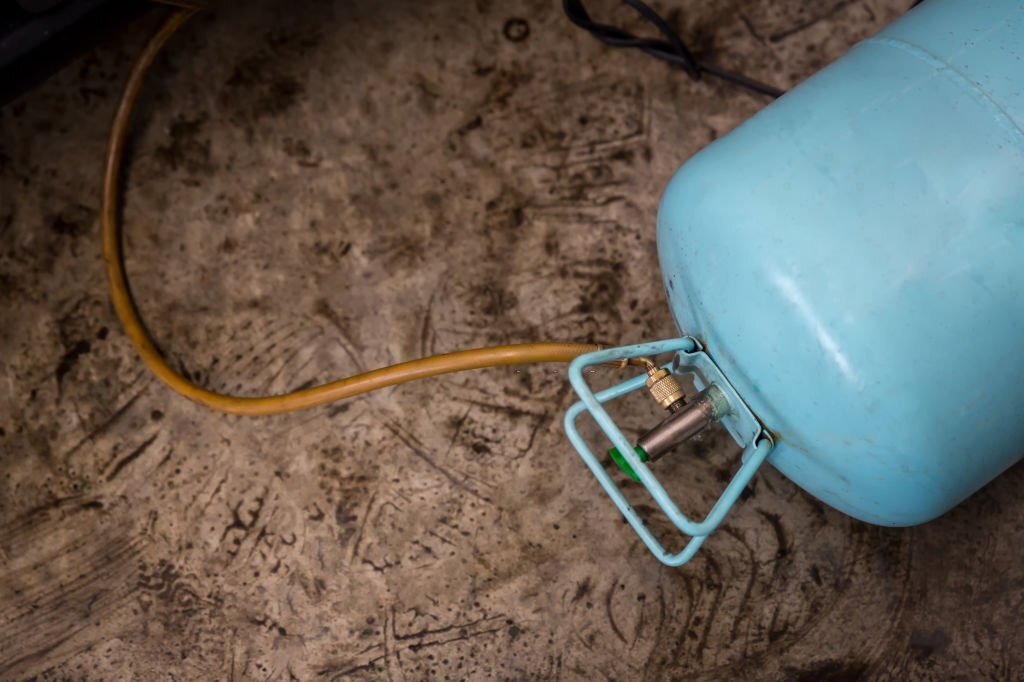As an HVAC technician, it is important to understand the proper handling procedures for refrigerants to ensure your safety and those around you. One common refrigerant used in HVAC systems is R407C. This refrigerant is a blend of hydrofluorocarbons (HFCs) commonly used in air conditioning and refrigeration applications. In this blog post, we will discuss tips on how to handle R407C refrigerant safely.
What is Refrigerant R407C?
Refrigerant R407C is a blend of hydrofluorocarbons (HFCs) commonly used in air conditioning and refrigeration systems. It is a non-ozone-depleting refrigerant used to replace ozone-depleting refrigerants like R22. R407C is a high-pressure refrigerant that requires special handling procedures to ensure safety.
Tips for Handling R407C Refrigerant
Understand the Hazards of R407C Refrigerant
R407C refrigerant can pose several hazards, including:
- Flammability: R407C is non-flammable at normal temperatures and pressures, but it can decompose under high temperatures, releasing flammable gases.
- Pressure: R407C has a higher pressure than other refrigerants, so it requires proper handling procedures to avoid injury or damage to equipment.
- Toxicity: R407C is not toxic but can displace oxygen in enclosed spaces, leading to asphyxiation.
Use Proper Personal Protective Equipment (PPE)
When handling R407C refrigerant, it is important to use the proper personal protective equipment (PPE) to prevent injury or exposure. The following PPE is recommended:
- Safety glasses or goggles
- Gloves made of butyl rubber or nitrile
- Respirator with an organic vapour cartridge
- Full-face shield
Handle R407C Refrigerant in Well-Ventilated Areas
R407C refrigerant should always be handled in a well-ventilated area to avoid exposure to high gas concentrations. Avoid working in confined spaces, and ensure proper ventilation in your working area.
Follow Proper Charging Procedures
When charging an HVAC system with R407C refrigerant, it is important to follow proper procedures to ensure the system is charged correctly and safely. The following steps are recommended:
- Check the system for leaks before charging.
- Charge the system slowly to avoid overcharging.
- Use a charging scale to ensure the correct refrigerant amount is added.
- Monitor the system pressure and temperature throughout the charging process.
- Avoid charging the system when it is excessively hot or cold.
Store R407C Refrigerant Properly
Proper storage of R407C refrigerant is important to ensure the gas remains stable and does not pose a hazard. The following storage guidelines should be followed:
- Store R407C refrigerant in a cool, dry place.
- Keep the refrigerant away from flames, sparks, or other ignition sources.
- Store the refrigerant in a sealed container that is designed for this purpose.
- Label the container with the contents and the date of purchase.
Dispose of R407C Refrigerant Properly
When disposing of R407C refrigerant, it is important to follow proper procedures to prevent harm to the environment and human health. The following guidelines should be followed:
- Do not vent R407C refrigerant into the atmosphere.
- Recover the refrigerant using a recovery machine.
- Store the recovered refrigerant in a properly labelled container.
- Dispose of the refrigerant by local, state, and federal regulations.
Is R407C Refrigerant Banned?
As of September 2020, R407C refrigerant is not banned by the Environmental Protection Agency (EPA). However, it is important to note that the EPA has regulations to phase out certain refrigerants, including R22 and some hydrochlorofluorocarbons (HCFCs). The use of R407C is still permitted, but technicians should be aware of the changing regulations and take steps to use more environmentally friendly refrigerants when possible.
Can R407C be used to replace R22?
Yes, R407C can replace R22 in many air conditioning and refrigeration systems. However, it is important to note that R407C has different operating characteristics than R22, so technicians must ensure the system is designed and operated properly to avoid problems. Additionally, R407C requires different equipment and handling procedures than R22, so technicians must be trained to properly use R407C before using it as a replacement.
What Refrigerant is Equivalent to R407C?
One refrigerant that is considered equivalent to R407C is R410A. R410A is a blend of HFCs commonly used in air conditioning and refrigeration systems. It has operating characteristics and pressures similar to R407C so it can be used as a replacement in many systems. However, R410A also requires special handling procedures and equipment, so technicians must be trained before using it as a replacement.
Conclusion
R407C refrigerant is commonly used in HVAC systems but can pose hazards if not handled properly. HVAC technicians should follow the tips outlined in this blog post to ensure that they handle R407C refrigerant safely. By understanding the hazards, using proper PPE, handling the refrigerant in well-ventilated areas, following proper charging procedures, storing the refrigerant properly, and disposing of the refrigerant correctly, technicians can prevent injury and protect the environment.

